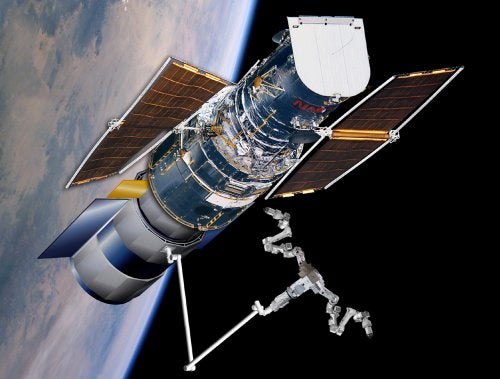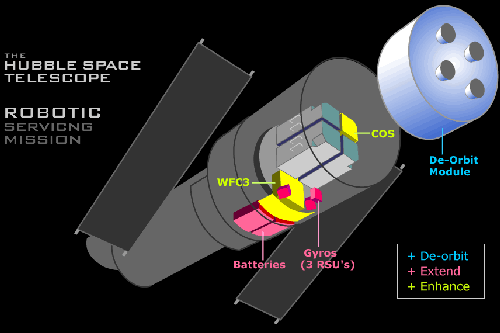Even though astronomers argue the Hubble Space Telescope requires a manned servicing mission (or something similar) to make necessary repairs, yesterday, NASA approved MacDonald, Dettwiler and Associates Ltd. (MDA) of Brampton, Ontario, to pursue a design concept for a possible robotic mission. The technology will be based on Dextre the dual-armed robot built by MDA under contract to the Canadian Space Agency to conduct exterior maintenance of the International Space Station.
Although NASA has not committed to a robotic mission, the MDA contract, valued at $154 million, is a small step toward it.
Dextre is specially designed to perform complex tasks — such as installing and removing batteries, power supplies, computer units, and scientific payloads — in the harsh environment of space. The robot will be adapted to replace Hubble’s batteries and failing gyroscopes.
In addition, it will install the Cosmic Origins Spectrograph (COS) — an instrument that is especially sensitive to far-ultraviolet light and is capable of seeing exceedingly faint UV objects — and the Wide-Field Camera 3 (WFC3). COS will continue where the Space Telescope Imaging Spectrograph left off, studying intergalactic gas in the very early universe as well as the formation of the first galaxies. WFC3 will image a wide range of light — from infrared through visible to ultraviolet — to add to our understanding of dark energy and star formation, among other cosmological questions.
If NASA decides to continue with a robotic mission, launch is not expected until December of 2007. Hubble’s batteries or remaining gyroscopes could fail by then, and there is no way to fix the telescope after that point is reached.











